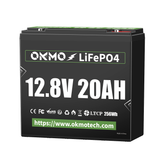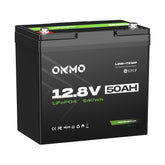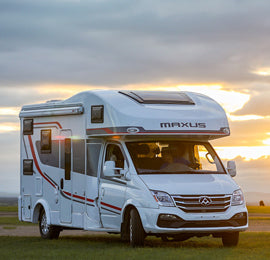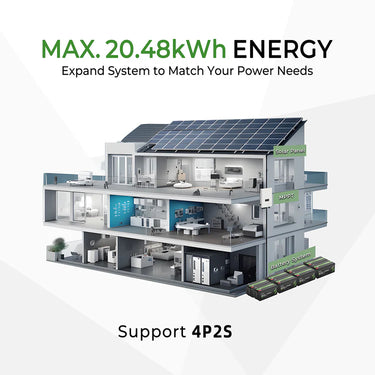The Best Way to Charge a Marine Battery: Why Solar + LiFePO4 is the Ultimate Solution
Marine batteries are the lifeblood of any boat, powering everything from navigation systems to trolling motors. However, charging them efficiently and sustainably remains a challenge for many boaters. Traditional charging methods—like engine alternators, shore power, and generators—have limitations in cost, convenience, and environmental impact. In this guide, we’ll explore why pairing solar panels with LiFePO4 (lithium iron phosphate) batteries is the most effective solution for modern boaters.
Part 1: The Challenges of Traditional Charging Methods
1. Engine Alternator Charging
-
How it works: Charges the battery while the engine runs.
-
Drawbacks:
-
Inefficiency: Alternators are designed to maintain batteries, not fully charge them. A 100Ah battery may take 8+ hours to charge.
-
Fuel Costs: Idling the engine burns fuel and increases wear.
-
Incompatibility with LiFePO4: Most alternators lack voltage regulation for lithium batteries, risking overcharge.
-
2. Shore Power Charging
-
How it works: Plug into a marina’s electrical grid using an onboard charger.
-
Drawbacks:
-
Limited Access: Useless in remote anchorages or offshore.
-
Cost: Marina fees add up (30–100/night in some regions).
-
Complex Setup: Requires bulky inverters and compatibility checks.
-
3. Portable Generators
-
How it works: Burn gasoline/diesel to generate electricity.
-
Drawbacks:
-
Noise and Emissions: Disrupts peaceful environments and harms marine ecosystems.
-
Maintenance: Regular servicing is required to prevent breakdowns.
-
Fuel Dependency: Carrying extra fuel adds weight and risk.
-

Part 2: Why Solar + LiFePO4 Batteries Outperform the Rest
1. Solar Charging: Harness Free Energy
-
How it works: Solar panels convert sunlight into electricity, stored in batteries.
-
Key Components:
-
Panels: Flexible or rigid options (100W–400W).
-
Charge Controller: Prevents overcharging (PWM or MPPT, with MPPT being 30% more efficient).
-
Battery Bank: LiFePO4 is ideal (see below).
-
-
-
Advantages:
-
Zero Fuel Costs: Sunlight is free and abundant.
-
Silent Operation: No noise pollution.
-
Low Maintenance: Panels last 25+ years with minimal cleaning.
-
2. LiFePO4 Batteries: The Perfect Match for Solar
-
Why LiFePO4?
-
Longevity: 2,000–5,000 cycles (vs. 300–600 cycles for lead-acid).
-
Efficiency: 95–99% charge efficiency (vs. 70–85% for lead-acid).
-
Weight: 50% lighter than lead-acid, improving boat performance.
-
Safety: No thermal runaway risk, even in saltwater environments.
-
-
Solar Synergy:
-
Voltage Compatibility: LiFePO4’s stable voltage (12.8V–14.6V) aligns with solar MPPT controllers.
-
Deep Discharge: Tolerates 80–100% depth of discharge (DoD), maximizing solar energy use.
-
Part 3: How to Set Up a Solar-Powered LiFePO4 System
Step 1: Calculate Your Energy Needs
-
Example:
-
Devices: Refrigerator (5A/h), LED lights (2A/h), fish finder (1A/h).
-
Daily Consumption: (5A + 2A + 1A) × 24h = 192Ah.
-
Solar Requirement: 192Ah ÷ 5 sun hours = 38A/day → 400W solar panels.
-
Step 2: Choose Components
-
Solar Panels:
-
Flexible Panels: Ideal for curved surfaces (e.g., Renogy 100W).
-
Rigid Panels: Higher efficiency (e.g., HQST 200W).
-
-
Charge Controller: MPPT type (e.g., Victron SmartSolar 100/30).
-
LiFePO4 Battery: 12V 200Ah (e.g., Battle Born or Renogy).
Step 3: Install and Maintain
-
Installation Tips:
-
Mount panels where shading is minimal (e.g., bimini top or deck).
-
Use corrosion-resistant connectors (tinned copper recommended).
-
-
Maintenance:
-
Clean panels monthly with freshwater.
-
Monitor battery health via Bluetooth (most LiFePO4 batteries have built-in BMS).
-

Part 4: Cost Comparison & Long-Term Savings
| Method | Initial Cost | Lifespan | 5-Year Cost |
|---|---|---|---|
| Solar + LiFePO4 | 1,500–3,000 | 10–15 years | 1,500–3,000 |
| Lead-Acid + Generator | 800–1,500 | 3–5 years | 2,500–4,000 |
| Shore Power | 200–500 | N/A | 3,000–6,000 |
*Assumes 30/nightmarinafees,3/gallon fuel, and 60 nights/year usage.*
Part 5: Real-World Success Stories
-
Case Study 1: A Pacific Northwest fisherman eliminated generator noise and saved $1,200/year by switching to a 300W solar + 200Ah LiFePO4 setup.
-
Case Study 2: A Caribbean charter boat reduced downtime with solar panels that keep batteries topped up during guest excursions.
For boaters seeking reliability, sustainability, and long-term savings, solar panels paired with LiFePO4 batteries are unmatched. While the upfront cost is higher, the combination delivers silent operation, zero emissions, and decades of service—making it the ultimate charging solution for modern marine adventures.
Next Steps:
-
Audit your energy needs.
-
Start with a small solar kit (100W + 100Ah LiFePO4).
-
Expand as your confidence (and budget) grows.
By embracing solar and lithium technology, you’re not just powering your boat—you’re investing in a cleaner, quieter, and more self-sufficient future on the water.










